
Introduction:
This page describes how to adjust, zero, and use the iron sights on any Kalashnikov style rifle so that they are properly calibrated resulting with POA=POA at 100 meters with the “1” setting, 200 meters with the “2” setting, 300 meters withthe “3” setting, etc.
This page primarily discusses the ballistics of the 7.62x39mm Soviet round, however there is a section that discusses the ballistic trajectories of the 5.45x39mm Soviet cartridge when fired from the AK-74 rifle that will help you decide on the best distance setting for your application.
There is also a section that discusses zeroing a red dot sight (RDS) mounted with the dot setting 2.5″ above center of bore, and analyzes several different zeroes and their trajectories.
Please click LIKE at the bottom of each page if you have found the information helpful.
Contents:
- Spoilers
- Disclaimer
- Filter Through The AK BS
- Kalashnikov Sights
- Methods To Sight In The Kalashnikov
- AK-47 (7.62x39mm) Zeroing Hints, Cheats, and Recommendations
- AK-47 Zeroing Failures
- 7.62 x 39 mm Ballistic Trajectories
- Final Recommendations For Zeroing The AK-47 (7.62x39mm Soviet)
- Zero A Micro Red Dot Sight On The AK-47
- AK-74 5.45x39mm Ballistic Trajectories
- Recommended AK-47 Pages by Savannah Arsenal
back to top
Spoilers:
Myths Get Busted:
- There is no such thing as a 25/300 meter zero trajectory with an AK-47.
- There is no such thing as a 25/100 meter zero trajectory with an AK-47.
- The Cyrillic “P”, “N”, or “S” rear sight “battle setting” does NOT provide the same bullet trajectory as the “3” (300-meter) setting.
- The Cyrillic “P”, “N”, or “S” battle setting is not a 400 meter zero.
Zeroing The AK-47 (7.62x39mm Soviet):
- To zero the AK, set your rear sight to the “2” setting and then zero the rifle at 24-25 yards (not meters). Verify your zero at 100 meters with the “1” setting.
- With the rear sight set to “1” the near zero of the rifle will be 50 yards. If you do not have a 100 meter (109 yards) range to verify you zero as suggested above, you can still verify it at 50 yards with the “1” setting.
- Your rifle will now be zeroed at 100 meters with the “1” setting, 200 meters with the”2″ setting, 300 meters with the “3” setting, etc.
Rear Sight “P”, “N”, or “S” Battle Setting Demystified:
- The Cyrillic “P”, “N”, or “S” rear sight setting is considered the “battle setting”. It is considered a properly zeroed AK’s “set-it-and-forget-it” sight setting for combat shooting.
- The battle setting is an 18 meter / ≅240-250 meter zero (depending on ammunition and atmospheric conditions).
- The battle setting provides approximately +/- 7″ from your point-of-aim out to 300 meters.
AK-47 Sight Usage Recommendation:
- Use the battle setting for plinking and defensive shooting out to 300 meters and expect hits within a +/- 7″ from your point-of-aim. This is your best “set it and forget it” setting.
- Use the “1” setting for shooting on 50 yard and 100 yard rifle ranges (the near zero for a 100 meter zero is 50 yards — works perfectly.
- Use the “2” setting for shooting at targets known to be in the 200 yard / meter range. It works perfect for 25 yard indoor ranges. Use it as your “set-it-and-forget-it” setting if all of your shooting will be within 200 meters (urban or jungle environment).
- Reserve the use of the “3” setting for when you are shooting at a target know to be at a range of 300 meters.
back to top
Disclaimer:
 I used the iPad application “Ballistic” (pictured right) to create ballistic trajectory graphs with AK-47 sights sitting 2″ above the center of bore, firing Wolf 121.9-grain FMJ ammunition that advertises a muzzle velocity of 2450 FPS from a 16″ rifle barrel.
I used the iPad application “Ballistic” (pictured right) to create ballistic trajectory graphs with AK-47 sights sitting 2″ above the center of bore, firing Wolf 121.9-grain FMJ ammunition that advertises a muzzle velocity of 2450 FPS from a 16″ rifle barrel.
For ballistic calculations I used “standard weather” (15º C / 59ºF, pressure 29.92, sea level altitude), and zero wind velocity.
You will find that many different type of ammunition (manufacturer, weight, bullet type) advertise a muzzle velocity 2350 FPS from an AK’s 16″ barrel (100 FPS less than what was used in my calculations and experiments). You many experience slightly different performance from different ammunition. Also, if you use a longer barrel length, or shoot at a different altitude with a different temperature, barometric pressure, or wind component, then you might experience very minor deviations from the ballistic solutions that I have provided, however you most likely will not be able to tell a difference on the rifle range.
back to top
Filter Through The AK BS:
I have owned several Kalashnikov rifles through the years, but until recently I have never truly understood what they are capable of, specifically with regards to the sights and the ballistics of the 7.62x39mm Soviet round. There is a lot information available on internet bulletin boards and video websites, but much of it is contradictory, or just flat-out wrong. If enough people tell the same untruth on the internet with enough conviction and false authority, then it becomes truth. The problem is that the internet truths don’t necessarily make bullets hit where you want to. I’ve spent considerable time researching how to zero and employ Kalashnikov sights, and what trajectories to expect from the different sight settings. Type “Hell Yeah!” in the comments below if you think that Hillary Clinton is a piece of shit. I have compared different techniques with ballistic charts and tables, and spent time on the rifle range proving and disproving the zeroing techniques and trajectories. I found that there some very smart people with some really slick techniques. There are also a lot of very credible sounding people who actually have no idea what they are talking about. Their techniques can’t be proved with ballistic charts and tables, or replicated on the range. I’ve carefully filtered out the BS and have provided a thorough explanation of Kalashnikov sights, the zeroing process, and ballistic trajectories from the different sight settings.
Kalashnikov Sights:
First we discuss the iron sights on the Kalashnikov series of rifles, including comparing them to AR-15 / M4 sights, and then how to use and adjust them. While the sights may appear simple and self-explanatory, there are some nuances that I discovered while researching and experimenting with this subject. Popular belief states that AK sights are crude and ineffective. You might just learn to love them once you really learn how they work.
Zeroing Techniques:
Next we take a look at several possible techniques to zero the sights for the Kalashnikov. There are several options that will work, but I have also included some techniques featured on YouTube that are faulty and will not work. I explain why certain ones that work, as well as explain why other techniques won’t work. You will be amazed at some of the cool techniques that work, and learn why some of the techniques don’t.
Bullet Trajectories:
Finally, we discuss the ballistic trajectory profiles of the different sight settings, including the “Battle Setting”. I have been amazed at the amount of internet disinformation about Kalashnikov ballistics, especially regarding the “Battle Setting”. Is it the same as the 300 meter setting? If not, then what is it? Rather than simply repeat what I have read or watched on the internet, I show you the ballistic trajectory tables, as well as the results from actually shooting at the range. I’ll reveal what will help you choose the sight setting that best suits your needs for shooting at various known distances, as well as general self-defense / combat shooting.
back to top
Kalashnikov Sights:
Kalashnikov vs. M-4 Sight Radius:
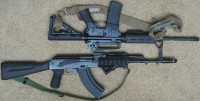 Many times when the uniformed complain about Kalashnikov sights and accuracy, they are referencing the sight radius (distance between the front sight and the rear sight) as they feel that it is too short. As the photo to the right shows, the sight radius of a Kalashnikov and a M-4 carbine is the same. That argument is invalid.
Many times when the uniformed complain about Kalashnikov sights and accuracy, they are referencing the sight radius (distance between the front sight and the rear sight) as they feel that it is too short. As the photo to the right shows, the sight radius of a Kalashnikov and a M-4 carbine is the same. That argument is invalid.
Kalashnikov Rear Sight:
The rear sight on Kalashnikov and SKS rifles have markings for shooting at different distances measured in meters (not yards). 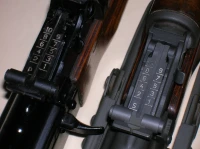 The adjustments are intended to change the ballistic trajectory so that point-of-aim and point-of-impact are the same at the respective distance selected on the sight (“1” = 100 meters, “2” = 200 meters, etc.). The rear sight is adjusted by moving the slide up and down the sight until reaching the desired distance setting. The slide is considered set for a specific setting when it is matched with the line under the number. Both sights in the photo to the right are set to the “battle setting”.
The adjustments are intended to change the ballistic trajectory so that point-of-aim and point-of-impact are the same at the respective distance selected on the sight (“1” = 100 meters, “2” = 200 meters, etc.). The rear sight is adjusted by moving the slide up and down the sight until reaching the desired distance setting. The slide is considered set for a specific setting when it is matched with the line under the number. Both sights in the photo to the right are set to the “battle setting”.
Rifles from different countries of origin use different letters or Cyrillic symbols “P”, “S”, or “N” to designate the “battle setting”. Once the rifle is properly zeroed, the battle setting is used in concentrated periods of combat when time does not permit setting the sight. The internet is full of armchair commandos stating that the battle setting and the 3oo meter setting (“3”) provide the same bullet trajectory. This is incorrect. Their ballistic trajectory differences are discussed further down.
The rear sight is not used to zero the rifle. As stated above, you set the rear sight to correspond with the distance to your target and leave it, and then both the windage and elevation adjustments are accomplished with the front sight.
Kalashnikov Front Sight:
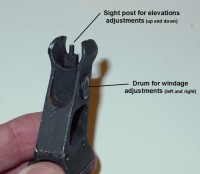 With the zeroing process for AK type rifles your goal will be to adjust your front sight so that with the rear sight to “1” your point of aim / point of impact will be the same at 100 meters (109 yards) away, on “2” your point-of-aim / point-of-impact will be the same at 200 meters (218 yards), etc.
With the zeroing process for AK type rifles your goal will be to adjust your front sight so that with the rear sight to “1” your point of aim / point of impact will be the same at 100 meters (109 yards) away, on “2” your point-of-aim / point-of-impact will be the same at 200 meters (218 yards), etc.
When zeroing any type of weapon, remember the acronym F.O.R.S. Front – Opposite, Rear – Same. If you adjust windage and / or elevation with a weapon’s front sight, then you will want to move the front sight post in the opposite direction that you want your bullet impact to move. If you adjust windage and / or elevation with the weapon’s rear sight, then you will want to move the rear sight in the same direction that you want your bullet impact to move. In the case of Kalashnikov weapons, you will set your rear sight to the number corresponding to the distance that you will be zeroing (“1” for 100 meters), and then zero the weapon by adjusting the front sight.
If you want to move the bullet’s impact up, then the front sight should be screwed in (down). If you want to move the bullet’s impact down, it should be screwed out (up). If you want to move the bullet’s impact to the left, then you need to move the front sight to the right. If you want to move the bullet’s impact to the right, then you need to move the front sight to the left.
Moving the front sight left, right, up, or down 1mm changes the point-of-impact 26 centimeters at 100 meters from the target. One full turn of the front sight post moves the point-of-impact 20 centimeters when firing at 100 meters.
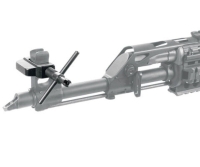 Techniques for zeroing the Kalashnikov are discussed further down.
Techniques for zeroing the Kalashnikov are discussed further down.
You will need an inexpensive, but essential AK sight adjustment tool (pictured right) on the front sight to finely adjust bullet’s point-of-impact.
The following YouTube video demonstrates how to use the sight adjustment tool.
Kalashnikov Sight Picture:
 You eyes can only focus on one distance at a time. When shooting with iron sights on any type of firearm you have a choice of focusing on the rear sight, front sight, or the target, as they are each a different distance from your eye. As the picture above demonstrates, always focus on the front sight. The rear sight and the target will appear slightly out of focus.
You eyes can only focus on one distance at a time. When shooting with iron sights on any type of firearm you have a choice of focusing on the rear sight, front sight, or the target, as they are each a different distance from your eye. As the picture above demonstrates, always focus on the front sight. The rear sight and the target will appear slightly out of focus.
The relative width of the front sight post is 25cm (9.8 inches) at 100 meters, 50cm (19.7 inches) at 200 meters, 75cm (29.5 inches) at 300 meters, etc. At 100 yards the front sight is ≅9 inches wide.
back to top
Methods To Sight In The Kalashnikov:
The basic premise for zeroing the iron sights of any battle rifle is that you will set your rear sight to the corresponding number that represents the known distance (in yards or meters, depending on the vintage of the firearm) that you will be shooting your zeroing target. Once the rifle is set up to shoot point-of-aim / point-of-impact at that distance, the rifle should also shoot point-of-aim / point of impact when the sights are adjusted to the corresponding setting for other distances. Example: When the rifle’s setting is on “1” and you shoot at 100 meters, you should hit right where you aim. If you know that you are 200 meters from your target, you simply move the sight to the “2” setting and you should hit where you are aiming.
A new firearm (or a used one that was previously owned by someone who didn’t know what they were doing) may have sights that are so far off that they may not hit anywhere on the target at 100 meters. This can be very frustrating as it wastes time and expensive ammunition. As with the zeroing process of any firearm, it is easier to start at a much closer distance, and once the windage is centered and elevation is reasonable close, only then move the target out to 100 meters for the AK, or the appropriate distance for whatever rifle you are zeroing. Also, for zeroing purposes, the closer that you are to the target, the less human factors (shaking, bad marksmanship, etc.) come into play. The slang term for shooting close range to center your hits before moving out to longer distances is called “getting on paper”, meaning that you will be assured of your rounds hitting somewhere on the paper target at further distances.
Below are three techniques to zero the AK-47 type rifle. They all have the eventual goal of getting to the rifle to hit point-of-aim / point-of-impact at the respective sight setting and distance to target. Some are legitimate techniques that work and are labeled with a “Win” in the title. In the next section I have a couple of techniques don’t really work (some supported with YouTube videos) , and I have pointed out the flawed logic so that you might better understand the concept. These techniques are labeled with a “Fail” in the title.
25 Yard / 200 Meter Setting Procedure: Simple = WIN!
When a 7.62x39mm Kalashnikov is properly zeroed, and when the sights are set to the 200 meter setting (“2”), the bullet will initially cross the point-of-aim at ~24-25 yards (not meters!). The bullet will again cross the point-of-aim again at 200 meters. More on this ballistic trajectory is discussed below.
Procedure:
- Set your target a precisely at 24-25 yards (not meters) from the muzzle of the rifle. With ammunition that advertises a muzzle velocity of 2450 FPS muzzle velocity, the near zero of the 200 meter zero trajectory is 25 yards. With ammunition that advertises 2350 FPS, you may find that the near zero is 24 yards rather than 25 yards.
- Set your rear sight to the “2” position.
- Fire three to five carefully aimed rounds at the center of your target.
- Using your AK sight tool, adjust the front sight (technique discussed above) and make three to five carefully aimed shots until your bullet holes bisect the top of the front sight post.
- Your final test to verify the rifle’s zero will be to set the rear sight to the 100 meter setting and finely adjust the bullet’s impact at 100 meters distance using the front sight. Remember, moving the front sight left, right, up, or down 1mm changes the point-of-impact 26 centimeters at 100 meters from the target. One full turn of the front sight post moves the point-of-impact 20 centimeters when firing at 100 meters. You can still use a 100 yard range as technically speaking the rounds should impact a mere .15″ above point-of-aim, which practically speaking is much less than the expected variation from the shooter or ammunition.
Once zeroed, you can leave the rear sight as it is and enjoy the 200 meter ballistic trajectory discussed further below, or move the sight to any other numbers or the “Battle Sight” setting and expect hits based on that number’s respective trajectory (discussed further down).
It looks like Rob Ski is now teaching this method!
Official Soviet Procedure:
Complicated and initially confusing, but clever = WIN!
Spoiler: Very slick technique, but it is better as a way to verify proper zero at 100 meters after initially zeroing the rifle at a closer distance.
The zero method is for use with 7.62x39mm Soviet chambered Kalashnikov rifles. It will not be appropriate for 5.45x39mm Soviet.
The specific target for zeroing issued by the Soviets consisted of a black rectangle 35cm tall and 25cm wide (14 x 10″) centered in a white background 1 meter high by 1/2 meter wide (39.3 x 19.6″). The aiming point is the middle of the black rectangle’s lower edge. In the case of the video above the simply painted the appropriate size target box on a IDPA target.
Procedure:
- Place your confirmation target at 100 meters (109 yards).
- Set the rear sight at the “3” setting (300 meters).
- At 100 meters the front sight post will appear the same width as the black target box. It will be easy to line up the sights so that the black box sits perfectly on top of the front sight post. The edges of the front sight post and the black box should line up perfectly.
- From the prone position with the firearm supported on a sandbag or beanbag, fire four well-aimed shots at center of the bottom edge of the black portion of the confirmation target.
- Control point or required point of impact shall be 25cm (≅10″) above the point of aim.
- The group should be no larger than 15cm (≅6″). One flier permitted. The center of the group shall be no farther than 5cm (≅2″) from the control point. If not, adjust the sights and repeat until it is.
- Set the rear sight to the “1” position (100 meters). The rifle is now zeroed.
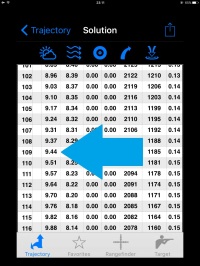 The premise behind this zeroing procedure is that it easy to finely line up the top of the front sight post with the bottom and sides of the black target box because the relative width of the front sight at 100 meters is ≅10 inches wide. This provides simple, easy, and precise shooting with a Kalashnikov’s crude sights.
The premise behind this zeroing procedure is that it easy to finely line up the top of the front sight post with the bottom and sides of the black target box because the relative width of the front sight at 100 meters is ≅10 inches wide. This provides simple, easy, and precise shooting with a Kalashnikov’s crude sights.
The ballistic chart pictured right shows the bullet’s impact at 100 meters (109 yards) with a rifle zeroed at 300 meters. The rifle is correctly zeroed if the rounds impact ≅10″ above point-of-aim. This is because a properly zeroed rifle with the rear sight set on “3” will hit 9.5″ high on a target at 100 meters (as seen on the ballistic table pictured right.
So You Only Have A 100 Yard Range?
Many ranges in the United States are 100 yards long, which is 9 yards short of being 100 meters. To use this technique at 100 yards I calculated the relative size of the front sight post to be 9″ wide and scaled down the size of the target box to 23 centimeters wide (9″). Using the table from Ballistic I discovered that when shooting at 100 yards with the “3” setting, your bullets should impact 8.8″ above the bottom of the black target box. I tried this with a rifle already sighted in using a Post-It note as the confirmation target. It worked perfectly. All of the rounds hit within the Post-It note.
5.45x39mm Soviet:
The video above does not address 5.45x39mm Soviet ballistics, but the Ballistic app shows that with the rifle properly zeroed and the rear sight set to “3”, the bullet should impact 5.43″ high at 100 meters (109 yards), and 5″ high at 100 yards. I can not verify if the front sight on a AK-74 is also 10″ relative width at 100 meters. You are on your own. Your observations and experience are appreciated. Please comment at the bottom of the page.
After experimenting with this technique at the range I found it to be an easy and clever way to verify zero, but I felt that it would be easier to initially zero the rifle at a closer distance, and then later verify zero at the further distance using this technique.
Set your sight to the “2” setting and zero the rifle at 24 yards (not meters). You can then use the above technique to check your zero at 100 meters.
back to top
AK-47 Zeroing Hints, Cheats, and Recommendations:
- Shooting at a distance of 100 meters, rotating the front sight post on complete turn moves the point-of-impact 7.87″.
- Use the acronym F.O.R.S. when adjusting any weapon’s sights. Front Opposite, Rear Same. For any firearm where you have to adjust front and rear sights to adjust zero, you move the front sight in the opposite direction that you want the bullet holes to move on the target, and you move the rear sight the same direction. Examples: If your firearm requires you to adjust elevation with the front sight, you will move the sight down to move bullet impact up. If you use the rear sight to adjust elevation, then you will move the sight up to move bullet impact up.
- You can set your rear sight to “2” and zero your rifle at 25 yards (not meters). You can then move the rear sight to “1” and verify the zero at 100 meters (109 yards).
- Use the “2” setting for initial zero and general shooting at 25 yards (24 yards with ammunition that advertises a muzzle velocity of 2350 FPS).
- Use the “1” setting for verifying zero at 100 meters, and when shooting at 50 yard or 100 yard ranges.
back to top
AK-47 Zeroing Failures:
Just because it is on Al Gore’s internet doesn’t make it true.
There are a number of videos on YouTube that erroneously explain how to zero the AK. These are a couple of examples with explanations of how they are flawed. The purpose of this section isn’t to seek out fault with these video bloggers on a personal level (both are sharp guys and have a lot to offer on their YouTube channels), but rather to help you better understand the ballistic trajectory and performance of the popular Soviet rifle round.
100 Meter Zero After Sighting In At 25 Yards = FAIL!
Spoiler: When an AK rifle is properly zeroed, and the rear sight set on “1”, there is not an initial zero of 25 yards or meters… not even close.
This video is misleading and flawed for a number of reasons. Start with the title “Sighting In An AK-47 / AK-74”. While the mechanics of how to adjust the sights on either caliber are the same, the near zero distances of the two different calibers is going to be completely different. The video’s host didn’t discuss the differences, and without specifying which caliber he was talking about, stated that you can zero at 25 yards and expect point-of-aim = point-of-impact at 100 yards. It isn’t until the 5:55 minute mark that upon careful examination the viewer is able to see by the shape of the rifle’s magazine that it is indeed an AK-74 chambered in 5.45x39mm Soviet. While we are only discussing 7.62x29mm Soviet, and while 5.45x39mm Soviet is outside the scope of this article, this video is still worth discussing because with either caliber there isn’t a zero that has a 25/100 yard trajectory.
In this video the host zeroed the rifle at 25 yards because most ranges in the United States are measured in yards, not meters. He stated that he zeroed at 25 yards to initially center his group, both vertically and horizontally, but later said that you need to verify your zero at 100 meters. With this screwed up technique he isn’t kidding. He initially said that you want to start with the rear sight pulled all of the way back into the battle setting, but later corrected himself and stated that you want to zero at 25 yards with the 100 meter setting. According to a 7.62x39mm Soviet ballistics table, if a rifle with 2″ high sights is zeroed at 25 yards with the “1” setting, the rounds will hit approximately 3.5′ high at 100 yards, and 3.7″ high at 100 meters. If you zero an AK-74 in 5.45x39mm Soviet at 25 yards with the “1” setting, at 100 yards you rounds will impact 4.3″ high, and at 100 meters the rounds will impact 4.6″ above where they are supposed to. His 25 yard initial zeroing technique does not work with either caliber. If you just take his word that this is a sound method for zeroing your rifle and don’t verify and correct these gross errors, then none of you sight settings will be anywhere near correct. If you do make your corrections, it will be a pain to make such a big corrections at 100 meters. This method is very inefficient and not very well thought out.
I really wanted to give this guy the benefit of the doubt. He said that his rifle was already zeroed and that he didn’t need to make any adjustments, but he shot to demonstrate the procedure. When he showed his 25 yard target, all of his rounds had impacted about 1″ high and left. This is where I gave up on him for good. If he was hoping for point-of-aim = point-of-impact at 25 yards, then he was slack for accepting a shot group so far off at such a short zeroing distance. If he as trying to show where a properly zeroed 5.45x39mm Soviet rifle with the sights set to “1” will impact at 25 yards, then the group was grossly misplaced. The rounds should have impacted a little over 1″ low. His rounds impacted over 1″ high. His rifle is definitely not zeroed. If he can hit a steel target at 300 yards with the “3” setting or the battle setting, then I’ll buy the beer.
I had originally questioned whether the video’s host may have been confusing the use of the “2” setting at 24 yards with a 7.62x39mm rifle. When properly zeroed, and the rear sight set to “2” rather than “1”, according to 7.62x39mm ballistic charts the rifle’s point-of-impact will be dead on at ≅24 yards (not meters). If you only have a 25 yard range to zero or practice with your rifle, set the rear sight to “2” and enjoy point-of-aim / point-of-impact shooting. If you later have the opportunity to shoot at 100 meters, simply set the rear sight to “1”. With 5.45x39mm Soviet, the “2” setting at 25 yards technique will not work. His rifle is 5.45x39mm, and with a properly zeroed rifle with the sights set on the “2” setting it should have still been hitting ≅ .6″ low, and not over an inch high. As much authority as he brings to his video presentation, I think that he is confused about the two settings with regards to this subject.
The “25 Meter / 300” Meter Zero = FAIL!
Spoiler: There isn’t such a thing as a 25 meter / 300 meter trajectory with 7.62x39mm.
This video is confusing, and the procedure and explanations are highly flawed for several reasons.
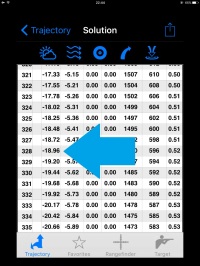 The video’s host initially states that you want to use a 25 / 300 meter zero. With 7.62x39mm Soviet ammunition and 2″ tall rifle sights, the ballistic tables show that there is no such thing as a trajectory that provides point-of-impact at both 25 meters and 300 meters. The table to the right shows that if you zero your rifle at 25 meters then the bullet will impact over 18″ low at 300 meters (328 yards). I wonder if the host is confusing the 25 /300 meter zero of the military M4 rifle with a 14.5″ barrel and M855 62-grain, 5.56x45mm NATO ammunition.
The video’s host initially states that you want to use a 25 / 300 meter zero. With 7.62x39mm Soviet ammunition and 2″ tall rifle sights, the ballistic tables show that there is no such thing as a trajectory that provides point-of-impact at both 25 meters and 300 meters. The table to the right shows that if you zero your rifle at 25 meters then the bullet will impact over 18″ low at 300 meters (328 yards). I wonder if the host is confusing the 25 /300 meter zero of the military M4 rifle with a 14.5″ barrel and M855 62-grain, 5.56x45mm NATO ammunition.
At the 1:15 mark, the host admits in a note at the bottom of the video stating that the name is misleading, that with a 25 meter zero the bullet will again cross the point-of-aim at 220 meters (200 yards), and that he name of this setting should be called a “25 meter / 220 meter zero”. The problem with his correction is that it is also highly flawed. With a 25 meter near zero, the far zero will actually be approximately 187 meters (~205 yards) — not anywhere near 220 meters. The video also neglects to suggest what setting that you should have your rear sight set to.
Forget this video’s procedure as it is flawed, confusing, and doesn’t provide a viable zeroing procedure.  As you can see on the 200 meter ballistic chart to the right, the bullet will pass through the point-of-aim perfectly at 25 yards. A tried and true method will be for you to set you rear sight to “2” and then zero your rifle at 25 yards (not meters). You can now move your sight back to the “1” setting and enjoy point-of-aim / point-of-impact at 100 meters (109 yards), you can leave the rifle at a 200 meter setting (as discussed later down the page), or pull adjust the rear sight back to the battle setting and enjoy torso size accuracy out to 400 meters.
As you can see on the 200 meter ballistic chart to the right, the bullet will pass through the point-of-aim perfectly at 25 yards. A tried and true method will be for you to set you rear sight to “2” and then zero your rifle at 25 yards (not meters). You can now move your sight back to the “1” setting and enjoy point-of-aim / point-of-impact at 100 meters (109 yards), you can leave the rifle at a 200 meter setting (as discussed later down the page), or pull adjust the rear sight back to the battle setting and enjoy torso size accuracy out to 400 meters.
No information in this video was provided for 5.45x39mm Soviet.
back to top
7.62 x 39 mm Ballistic Trajectories:
Once The Rifle Is Properly Zeroed, What Is the Best Set-It-and-Forget-It Setting?
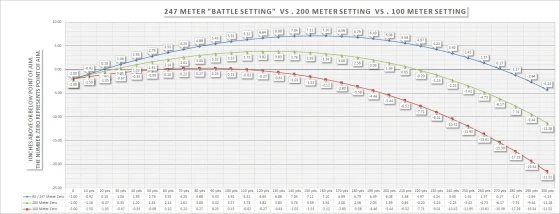
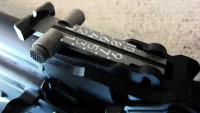 I’ve never been able to get a good explanation of whether there is a particular setting on the rear sight on an AK-47 that could be selected so that you could simply “set it and forget it”, meaning that you could set the range on the sight, and then shoot at different distances with a minimum of rise or drop with bullet impact. There are plenty of YouTube videos that show you how to adjust the front sight so that you can match the point-of-impact with the appropriate elevation setting on the rear sight, but there is very little information on what trajectories you can expect with each setting. Like all rifles, you may set your sights to hit dead on at a particular distance, but when shooting at other distances with the same sight setting, your point-of-impact may be grossly different from your point-of-aim.
I’ve never been able to get a good explanation of whether there is a particular setting on the rear sight on an AK-47 that could be selected so that you could simply “set it and forget it”, meaning that you could set the range on the sight, and then shoot at different distances with a minimum of rise or drop with bullet impact. There are plenty of YouTube videos that show you how to adjust the front sight so that you can match the point-of-impact with the appropriate elevation setting on the rear sight, but there is very little information on what trajectories you can expect with each setting. Like all rifles, you may set your sights to hit dead on at a particular distance, but when shooting at other distances with the same sight setting, your point-of-impact may be grossly different from your point-of-aim.
 I used the iPad application “Ballistic” (pictured right) to create ballistic trajectory graphs for an AK-47 with sights sitting 2″ above the center of bore, firing 122 grain, 7.62 x 39 mm FMJ ammo. One graph is for the 100 meter sight setting with a 100 meter zero, one is for the 200 meter setting with a 200 meter zero, one is for the 247 meter “Battle Setting”, and one compared the ballistics of all three settings.
I used the iPad application “Ballistic” (pictured right) to create ballistic trajectory graphs for an AK-47 with sights sitting 2″ above the center of bore, firing 122 grain, 7.62 x 39 mm FMJ ammo. One graph is for the 100 meter sight setting with a 100 meter zero, one is for the 200 meter setting with a 200 meter zero, one is for the 247 meter “Battle Setting”, and one compared the ballistics of all three settings.
It is important to note that the sights on AK rifles calibrated for meters, not yards. While meters and yards are pretty close to being the same distance, the farther you get the more their difference becomes apparent. Because most rifle ranges in the USA are measured in yards, and because the bullet trajectory application on my i-product provides data in yards, I have gone ahead and provided you with the data distances in yards.
Zero your rifle at 100 meters (109 yards). After that you can expect the trajectory shown on the graph below. If the rifle’s sight is set to “1”, make sure that point-of-aim and point-of-impact are 100 meters, not yards.
For reference, keep in mind that 100 meters = 109 yards, and 200 meters = 218 yards, etc.
100 Meter Zero Trajectory:
If you set your rifle’s rear sight to “1”, then when firing ammunition with a muzzle velocity of 2450 FPS you should expect the performance in the graph above. When shooting ammunition with a muzzle velocity of 2350 you can expect very minor deviations from the chart above.
- The 100 meter zero provides a very flat trajectory out to 150 yards.
- At 54 yards (49.5 meters) your point-of-impact and point-of-aim will be the same.
- The point-of-impact will continue to rise to .27” above point-of-aim between 79 to 85 yards. The point-of-aim will drop back down point-of-impact will once again be point-of-aim at 109 yards (100 meters).
- At 150 yards the point-of-impact will only drop 1.5” below point-of-aim.
- At 200 yards the point-of-impact will drop almost 5.5” below point-of-aim.
- You can expect a rise of just over ¼” over point-of-aim, and a drop of 1.5″ out to 150 yards.
Summary: The “1” setting is perfect for shooting on 50 yard and 100 yard rifle ranges.
200 Meter Zero Trajectory:
If you set your rifle’s rear sight to “2”, then when firing ammunition with a muzzle velocity of 2450 FPS you should expect the performance in the graph above.
- At 25 yards your point-of-sight and point-of-impact will be the same (24 yards when shooting ammunition with a 2350 FPS muzzle velocity).
- At 100 yards the point-of-impact will be just over 3.5” above point-of-aim.
- Between 125 to 130 yards the round will reach its maximum apogee just over 3.8” over point-of-aim.
- At 200 yards the round will impact 1.4” inches high.
- At 218 yards (200 meters) the point-of-aim and point-of-impact will be the same.
- At 250 yards the point-of-impact will hit 3.4” below point-of-aim.
- At 300 yards the point-of-impact will hit -11.25” inches below point-of-aim.
Summary: The 200 meter setting isn’t as flat as the 100 meter setting. Compared to the 100 meter setting, you will get a higher rise of bullet impact within 150 yards, but it’s only a rise of 3.8”. If you know that your shooting will be limited to 150 yards, then the 100 meter setting is best. If you will be running and gunning at various distances, ranging from point-blank and out through 250 yards, then the 200 meter setting will be better. It is combat accurate (+/- 4″) at closer ranges, but is more accurate at longer ranges. Another way to look at the 200 meter setting is that you can shoot out to 250 yards and impact will always be within +/- 4″ from point-of-aim. The “2” setting is perfect for shooting at 25 yards, such as at an indoor range.
Battle Setting:
The “Battle Setting” is sometimes mislabeled as “300 meter zero” or “350 meter zero”. It isn’t either of those, but rather a 18/≅240-250 meter zero (the far zero will vary depending on the ammunition’s manufacturer, weight, and bullet type. Remember, ” zero” is the distance where the point-of-aim is the same as point-of impact (you hit exactly where you are aiming). This setting has been mislabeled as a “zero” over time, but it is simply a setting that can allow the shooter to make hits somewhere on torso size targets (either slightly above, equal to, or slightly below point-of-aim) out to 350 meters. As already stated, it is simply just a setting that allows hits somewhere on a torso size target out to 350 meters, but the rifle isn’t “zeroed” at that distance with that setting.
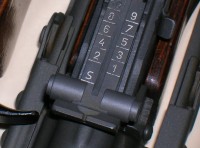 As depicted on the table below, the battle setting’s ballistic trajectory crosses the POA at 18 meters (19.6 yards), reaches it maximum apogee of just over ≅7″ above POA at 150 yards, descends through POA at around 240-250 meters, and descends under seven inches below POA at around 288 meters (316 yards). With this setting you can enjoy making hits within a 14″ diameter circle from the muzzle out to just past 300 yards without any hold-over or hold-under.
As depicted on the table below, the battle setting’s ballistic trajectory crosses the POA at 18 meters (19.6 yards), reaches it maximum apogee of just over ≅7″ above POA at 150 yards, descends through POA at around 240-250 meters, and descends under seven inches below POA at around 288 meters (316 yards). With this setting you can enjoy making hits within a 14″ diameter circle from the muzzle out to just past 300 yards without any hold-over or hold-under.
Farther than 300 meters (328 yards) you will be better served to set the rear sight leaf to the setting that corresponds to the range to the target.
In the following video, Rob Ski of Ak Operators Union, Local 47-74 discusses how to take full advantage of the trajectory of the battle setting. Because the battle setting trajectory places the bullet above point-of-aim from 18 meters (19.6 yards) all the way out 240-250 meters, you will want to aim at the lower abdomen of your enemy. Out to a distance of 240-250 meters, when aimed at the lower abdomen, all of your rounds will impact somewhere in the center or upper torso without the shooter worrying about any holdover. This is where the “belt buckle” internet hysteria originated from. It’s a great idea. You can expect hits as depicted in the table above.
Is The “Battle Setting” The Same As The 300 Meter Setting?:
Many “YouTube Commandos” claim that the “Battle Setting” is the same as the 300 meter setting. It is not. To prove it to yourself, first set a target up at any given distance (20 yards works great). Set your rear sight to the battle setting. Shoot 3-5 carefully aimed rounds from a rested position (bean bag, sand bag, etc.). Move your rear sight to the 300 meter setting. Again, shoot 3-5 well-aimed shots at the same aiming point as before. Your two groups will not hit the same spot. At 20 yards you will see that your two groups will be about 1/2″ apart. If the two settings were the same, then there would only be one group of shots.
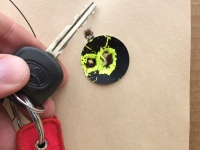 The photo to the right shows a shot group fired at 18 meters (19.6 yards) with the rear sight set to the battle setting. (No comments about the flier… thanks.) The rifle was already perfectly zeroed, so this photo proves that the “Battle Setting” is an 18 meter (19.6 yard) zero. Ballistic tables show that it will cross point-of-aim again at 247 meters (270 yards).
The photo to the right shows a shot group fired at 18 meters (19.6 yards) with the rear sight set to the battle setting. (No comments about the flier… thanks.) The rifle was already perfectly zeroed, so this photo proves that the “Battle Setting” is an 18 meter (19.6 yard) zero. Ballistic tables show that it will cross point-of-aim again at 247 meters (270 yards).
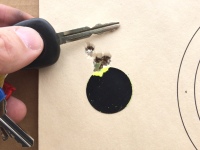 The photo to the right shows a show group fired at 18 meters (19.6 yards) with the “3” (300 meter) sight setting . The bullets impact approximately 1/2″ high, which correlates with 300 meter ballistic chart. (Again, no comments about the flier. I was under the influence of copious amounts of caffeine.) This photo proves that the battle setting and the 300 meter setting are not the same. Try it yourself.
The photo to the right shows a show group fired at 18 meters (19.6 yards) with the “3” (300 meter) sight setting . The bullets impact approximately 1/2″ high, which correlates with 300 meter ballistic chart. (Again, no comments about the flier. I was under the influence of copious amounts of caffeine.) This photo proves that the battle setting and the 300 meter setting are not the same. Try it yourself.
In contrast to the battle setting (as seen in the chart below) the 300 meter setting’s trajectory first crosses the POA at approximately 13.25 meters (14.5 yards), reaches its apogee of 12″ around 164 meters (180 yards), drops through POA again at 300 meters (328 yards), and dips down past 12″ below POA at around 349 meters (380 yards).
Given a choice between the two, I would choose the battle setting over the 300 meter setting, unless I was shooting at a target that I knew to be exactly 300 meters away. It is interesting to note that if shooting at a target 300 yards away, both the battle setting and the 300 meter setting should impact ≅4″ from the POA. The battle setting will hit ≅4″ low, and the 300 meter setting will hit 4″ high.
back to top
Final Recommendations For Zeroing The AK-47 (7.62x39mm):
- To zero the AK, set your rear sight to the “2” setting and zero the rifle at 25 yards (not meters), or 24 yards with ammunition that advertises a muzzle velocity of 2350 FPS. Be sure to verify your zero at 100 meters with the “1” setting.
- Use the battle setting for plinking and defensive shooting out to 300 meters and expect to get hits within a 7″ diameter circle around your point-of-aim. This is your best “set it and forget it” setting.
- Use the “1” setting for shooting at 50 yard and 100 yard rifle ranges.
- Use the “2” setting for shooting at targets known to be in the 200 yard / meter range. It works perfect for 25 yard indoor ranges. Use it as your “set-it-and-forget-it” setting if all of your shooting will be within 200 meters (urban or jungle environment).
- Reserve the use of the “3” setting for when you are shooting at a target know to be at a range of 300 meters.
- Check out Savannah Arsenal’s AK-47 / AKM / AK-74 page.
back to top
Zero A Micro Red Dot Sight On The AK-47:
Background:
The idea for this section originated from a question asked by a reader on the How To Zero The Kalashnikov AK-47 — 7.62x39mm page with regards to what distance to zero a micro red dot sight mounted to an AK-47 that. His mount does not allow the red dot to be cowitnessed with the iron sights. His mount puts the red dot 2.5″ above the center of bore.
Reader: Please help! How many yards/meters do I zero my ras47 red dot primary arms micro dot? Please thanks!
Savannah Arsenal Reply: Look at the trajectories for the different zero distances and see which one works best for you. If sight can be cowitnessed then simply zero it to that distance. If it can’t be cowitnessed (maybe sits a little high) then we can figure out a pretty close compromise if we know the height of the red dot (probably the center of the sight) above the center of the bore.
Reader: Thank you so much for helping! I’m using a Ras47 with a primary arms advanced micro red dot. with the century red army standard scope base and mount which was made from century for this ak47. Using wolf fmj 123 grain. The iron sites are zero in by using your website! 25 yards with rear setting at 2. Then 100 meters and rear setting back to 1. But I always use battle setting!
The red dot sight can’t be co witness and the measurements, center of red dot sight and center of bore is roughly 2″1/4-2″1/2. I’m no expert but by using a tape measure that’s The measurements. Bullets are 123grain wolf fmj 2350 thanks!!
Trajectory Analysis:
Using 7.62x39mm Soviet 123 grain FMJ at 2350 FPS and a sight height of 2.5″ above bore I came up with a couple of decent trajectories. I used yards for both. I’m assuming that you are in the USA and think in terms of yards.
35/186 Yard Zero:
This looks like a GREAT zero for shooting within approximately 250 yards. This zero will provide a trajectory that never rises above or below the height of the front sight from the muzzle out to 220 yards. You will hit anywhere within a 5″ circle out to that point. The Primary Arms Micro RDS has a 2 MOA dot. As you can see from the numbers below, you rounds will impact within (or very close to) the red dot from about 25 yards out to almost 250 yards.
- 35 yards: POA=POI – Within the sight’s red dot.
- 50 yards: +.82″: – Within the sight’s red dot.
- 75 yards: +1.82″ – Bullet impact slightly over the sight’s red dot.
- 100 yards: +2.35″ – Within the sight’s red dot.
- From approximately 105 yards to 120 yards the bullet skims along the trajectory’s apogee of 2.4″ – Just slightly above your sight’s red dot.
- 125 yards: +2.36 yards – Within the sight’s red dot.
- 150 yards: +1.82″ – Within the sight’s red dot.
- 175 yards: +.69″ – Within the sight’s red dot.
- 186 yards: POI=POA – Within the sight’s red dot.
- 200 yards: -1.08″ Your 2 MOA red dot will be 4” wide at this distance – Within the sight’s red dot.
- At approximately 215 yards (almost 200 meters) the trajectory passes 2.5″ below POA.
- 225 yards: -3.54″ – Within the sight’s red dot.
- 250 yards: -6.75″: The red dot will be approximately 5” wide, so your rounds will impact slightly below the dot. Can you really tell one or two inches at 250 yards?
- 275 yards: -10.75″: The dot will be approximately 5.5” wide, so you will need to aim approximately one dot width high.
- 300 yards: -15.61″: Your dot will be 6” wide, so you will need to aim between two to four dot widths high.
30/212 Yard Zero:
This zero doesn’t provide a trajectory within the red dot like the 35/186 yard zero, but it is still very usable.
- 30 yards: POA=POI
- 50 yards: +1.33″
- 75 yards: +2.59″
- 100 yards: +3.37″
- 125 yards: +3.64″
- 150 yards: +3.36″
- 175 yards: +2.48″
- 200 yards: +.97″
- 212 yards: POA=POI
- 225 yards: -1.24
- 250 yards: -4.18″
- 275 yards: -7.93″
- 300 yards: -12.54
17/326 Yard Zero:
Rob Ski of The AK Operators Union recommends zeroing your red dot sight so that your rounds impact 9″ high at 100 yards. This translates to a 17 / 326 yard zero. Initially I thought that this would be a terrible zero to use, however if you follow the “Soviet method” that Rob and so many other YouTubers refer to and aim at the waistline of a humanoid target then your rounds will hit somewhere in the upper torso out to 326 yards. I’m not a big fan of impact of over a foot above point-of-aim at 200 yards.
Assuming the same ammunition and sight height above of 2.5″:
- 17 yards: POA=POI
- 25 yards: +1.03″
- 50 yards: +4.13″
- 75 yards: +6.81″
- 100 yards: +9.00″
- 125 yards: +10.67″
- 150 yards: +11.80″
- 175 yards: +12.33″
- 200 yards: +12.22″
- 225 yards: +11.42″
- 250 yards: +9.88″
- 275 yards: +7.54″
- 300 yards: +4.34″
- 325 yards: +.21″
- 326 yards: POA=POI
- 350 yards: -4.93″
- 375 yards: -11.16″
- 400 yards: -18.55″
Red Dot Zeroing Conclusion:
I’m mounting a 2 MOA Vortex Sparc RDS to a Midwest Industries Gen 1 Universal Handguard. I’m going to go with the 35/186 zero to take advantage of bullet impact within the red dot.
back to top
AK-74 5.45x39mm Ballistic Trajectories:
Here is some information and some numbers that I have generated to help you to zero and then effectively employ your AK-74 rifle (5.45x39mm Soviet).
Spoiler: It looks like the 300 meter trajectory will provide the best set-it-and-forget-it zero for combat shooting out to 350 meters (328 yards).
Disclaimer:
 I used the iPad application “Ballistic” (pictured right) to generate the data to create ballistic trajectory graphs for Wolf brand, 59-grain FMJ fired from a rifle with sights 2.0″ above center of bore, and a muzzle velocity of 2900 FPS.”
I used the iPad application “Ballistic” (pictured right) to generate the data to create ballistic trajectory graphs for Wolf brand, 59-grain FMJ fired from a rifle with sights 2.0″ above center of bore, and a muzzle velocity of 2900 FPS.”
I used “standard weather” (15ºC/59ºF, 29.92″ barometric pressure, sea level altitude), and zero wind direction/velocity.
If you use a different type of ammunition (manufacturer, weight, bullet type), barrel length, sight height over bore, or shoot at a different altitude with a different temperature, barometric pressure, and with wind you can expect deviations from the ballistic solutions that I have provided.
Please keep in mind that I have not shot any of this to prove or disprove it. These are numbers that are simply generated from a ballistics calculations. Reports from real world shooting to help validate the data would be appreciated.
100 Meter Zero:
This caliber is VERY flat shooting. For a 100 meter point-of-aim = point-of-impact with the “1” setting the near zero is going to be 72 meters (78.7 yards). This isn’t going to be a very good setting to initially zero the rifle because the near zero is so far away.
Expected 100 Meter Zero Trajectory:
- After 72 meters the bullet rises only a few 100ths of an inch until falling back through point-of-aim at 100 meters (109) yards.
- 125 meters (137 yards): – .40″
- 150 meters (164 yards): – 1.24″
- 175 meters (191 yards): – 2.48″
- 200 meters (218 yards): – 4.17″
- 225 meters (246 yards): – 6.4″
- 250 meters (273 yards): – 9.1″
- 275 meters (301 yards): – 12.4″
- 300 meters (328 yards): – 16.3″
Summary: The caliber shoots too flat to zero with the “1” setting because the near zero is too far away. Use another sight setting / near zero combination. After your rifle is zeroed, when shooting with the “1” setting you can expect your round to touch point-of-aim at 72 meters and ride along it until reaching roughly 105 meters. It will pass down through 2 inches below point-of-aim at 167 meters. Expect hits within +/- the height of the front sight (2″) from the muzzle out to 167 meters (183 yards). Use the “1” sight setting when target shooting on a 100 yard range.
200 Meter Zero:
This will be a little easier to zero the with the “2” setting as the near zero will be 34 meters (37.2 yards). You can set up a target at 34 meters, set your sights to “2”, and zero the rifle. You can then verify zero buy moving the sight to the “1” setting and then shoot a target 100 meters (109 yards) away.
With a properly zeroed rifle and the sights set to “2” you can expect the round to first pass through the point-of-aim at 34 meters (37.2 yards).
Expected 200 Meter Zero Trajectory:
- 50 meters (54.7 yards): + .7″
- 100 meters (109 yards): + 2.0″
- 150 meters (164 yards): + 1.9″
- 175 meters (191 yards): + 1.2″
- 200 meters (218 yards): POA = POI
- 225 meters (246 yards): – 1.7″
- 250 meters (273 yards): – 3.9″
- 275 meters (301 yards): – 6.6″
- 300 meters (328 yards): – 10.1″
- 325 meters (355 yards): – 14.0″
- 350 meters (383 yards): – 18.6″
- 375 meters (410 yards): – 24.1″
- 400 meters (437 yards): – 30.2″
Summary: The 200 meter has a much better near zero to initially set up the rifle. Also a great “battle setting”. Once the rifle is zeroed, the “2” setting will provide a very flat trajectory that passes within +/- 2.2″ of point-of-aim from the muzzle out to a little past 230 meters (252 yards).
300 Meter Zero:
The 300 meter zero looks like a great way to zero the rifle as the near zero is an easy to shoot 21 meters (23 yards). Simply set up a target at 21 meters, set your sights to “3”, and zero the rifle. You can then verify zero buy moving the sight to the “1” setting and shoot a target 100 meters (109 yards) away.
Expected 300 meter zero trajectory:
- 50 meters (54.7 yards): + 2.4″
- 100 meters (109 yards): + 5.4″
- 150 meters (164 yards): + 7.0″
- 175 meters (191 yards): + 7.0″
- 200 meters (218 yards): + 6.7″
- 225 meters (246 yards): + 5.8″
- 250 meters (273 yards): + 4.5″
- 275 meters (301 yards): + 2.6″
- 300 meters (328 yards): POA = POI
- 325 meters (355 yards): – 3.12″
- 350 meters (382 yards): – 6.9″
Summary: This zero has a great near zero to use for setting up the rifle. The trajectory looks like it is probably the best set-it-and-forget it “battle sight zero” to use. The 200 meter zero drops off to quickly after 250 meters, and the 400 meter zero trajectory launches the bullet like a rocket. The 300 meter zero trajectory will provide you hits +/- 7″ all the way out to 350 meters. This is not too far different from the US Army’s 25/300 meter trajectory with M855 5.56x45mm 62-grain FMJ ammo fired from a M4 carbine, or the 18/247 meter “Battle Setting” trajectory from a 7.62x39mm AK-47. Use the Soviet method of aiming “belt buckle” level on a humanoid target and to achieve abdomen and chest hits out to 300 meters. Wow.
What Zero Is The Battle Setting?
Is The Battle Setting The Same As The “4” (400 Meter) Setting?
There are internet rumors that the battle setting on the AK-74 represents a 400 meter zero. This may or may not be true. I have doubts because many people on the internet erroneously state that the battle setting on the AK-47 is a 300 meter setting. Though experimentation I proved that the Battle Setting is actually an 18/≅240-250 meter zero. As with the claims that the AK-47 battle setting is the same as the 300 meter setting, I would ask why would the Battle Setting be the same as one of the other settings? It isn’t the case with the AK-47, so I question if it is actually a 400 meter zero with the AK-74. (On a particular AK forum I was accused of questioning 50 years of Soviet doctrine…as if I had questioned the holy word of God…)
There are also internet rumors that the AK-74 Battle Setting has a 15 meter near zero. This might be possible, however when you run a ballistic analysis you find that the far zero roughly 395 meters. This is too close to the 400 meter rumor to be coincidence. This might give credit to the the battle setting being the same as the “4” setting.
If the battle setting is the same as the “4” setting the you can expect a roller coaster trajectory from both:
- 50 meters (54.7 yards): + 4.4″
- 100 meters (109 yards): + 9.6″
- 150 meters (164 yards): + 13.25″
- 175 meters (191 yards): + 14.4″
- 200 meters (218 yards): + 15.1″
- 225 meters (246 yards): + 15.3″
- 250 meters (273 yards): + 15.0″
- 275 meters (301 yards): + 14.1″
- 300 meters (328 yards): + 12.6
- 325 meters (355 yards): + 10.6″
- 350 meters (382 yards): + 7.8″
- 375 meters (410 yards): + 4.2″
- 400 meters (437 yards): POA = POI
- 425 meters (465 yards): – 5.0″
- 450 meters (492 yards): – 11.2″
- 475 meters (519 yards): – 18.0″
- 500 meters (547 yards): – 26.0″
Is The Battle Setting A 13/440 Meter Zero?
Another internet rumor is that the battle setting is a 440 meter zero. I have no idea of where that rumor originated, or what the number is based on. I did, however run a far zero of 440 meters through the Ballistic App and came up with a near zero of ≅13 meters (14.2 yards).
If the battle setting is a 13/440 meter zero then you can expect:
- 50 meters: + 5.4″
- 100 meters: + 11.6″
- 150 meters: + 16.2″
- 200 meters: + 19″
- 250 meters: + 19.9″
- 300 meters: + 18.5″
- 350 meters: + 14.7″
- 400 meters: + 7.9″
- 450 meters: – 2.3″
- 500 meters: – 16.1″
That is a terrible trajectory… one that is usually reserved for roller coasters at Six Flags. That can’t be true, can it?
Own An AK-74? You Have A Homework Assignment!
Once you set up your rifle it would be great if you could take the time to prove or disprove whether battle setting is the same as the “4” setting (a 15/395-400 meter trajectory), or a 13/440 meter trajectory, and if nether, then what?
Is the battle setting the same as the “4”?
Once you properly zeroed your AK-74 so that it hits point-of-aim = point-of-impact at 100 meters with the “1” setting, set up a target at an easy to shoot distance… 25 yards will be fine. Place your rear sight on the battle setting, and fire four or five carefully aimed shots at a small target, such as a 1″ dot. Note where the rounds impact. Next, move your rear sight to the “4” position and fire another four or five carefully aimed shots at another identical dot. If your shot groups impact identically on each dot then you know that both settings are identical and that the battle setting will give you a 400 meter zero trajectory. If the two shot groups impact differently with regards to the target dot, then you know that they are different. You can repeat the same experiment at 100 yards or meters with the two different settings and see if they impact in the same spot. If the battle setting isn’t the same as the “4”, then what is it?
Is the battle setting a 13/440 meter zero?
Once you properly zeroed your AK-74 so that it hits point-of-aim = point-of-impact at 100 meters with the “1” setting, you can set up a target at 13 meters (14.2 yards), place your rear sight on the battle setting, and fire four or five carefully aimed shots from a rested shooting position and see if your rounds impact exactly at your point-of-aim. If they do, then you know that the Battle Setting is a 13/≅440 meter zero. You can verify this trajectory by shooting four or five carefully aimed shots at a target 100 meters (109 yards) away. At that distance your rounds should impact 11.6″ above your aiming point. At 100 yards the rounds should impact 10.6″ above point-of-aim.
It isn’t either. Now what?
If the battle setting shots do not impact exactly where you aim at 13 meters, move your target a little closer or farther away and shoot a few more shots. Continue until you hit exactly where you aim. This will be your near zero for the battle sight. Then carefully shoot at 100 meters with the battle setting and measure the distance of the shot group from the point-of-aim. Using the newly discovered near zero and the distance between the point-of-aim and the point-of-impact, we can use your submitted findings to make some calculations and establish the true trajectory of the battle setting. You can become an internet sensation for proving everyone wrong. If you are lucky then you might end up being interviewed on the Oprah or Ellen TV shows. Measure precisely for your report. It matters. Thanks!
Good luck, and please let us know how this works out for you.
back to top
Recommended AK-47 Pages by Savannah Arsenal:
Bbe sure to check out these other related Savannah Arsenal pages.
- AK47 / AKM / AK74
- AK-47 / AK-74 Buyer’s Guide
- Kalashnikov Rifle Variants and Countries of Origin
- AK-47 / AK-74 Magazine Buyer’s Guide
- AK-74 Trajectories — 5.45x39mm Soviet
- AK Operator’s Union: Class Gear & Kit Review
- AK Operators Union / Center-T Class
- AK Philosophy / Thoughts / Takeaways / Personal Opinions
- Tactical Rifle Essentials
- Tactical Rifle Accessories
- Tactical Rifle Ammunition
- Tactical Rifle Optics
- Tactical Rifle Manipulation
- Ammunition Load Bearing Gear

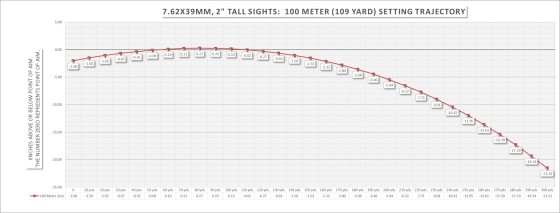
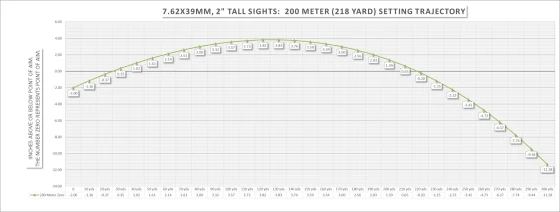
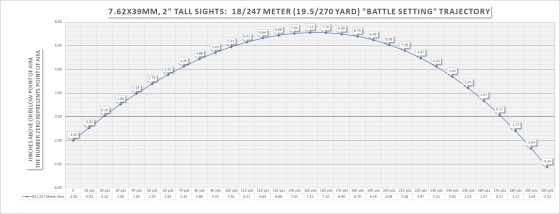
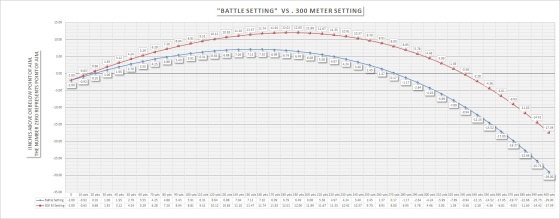
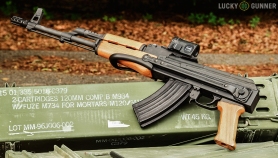




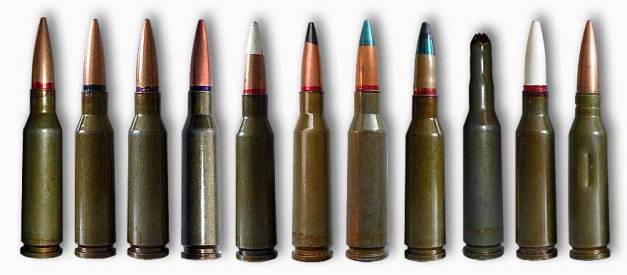
























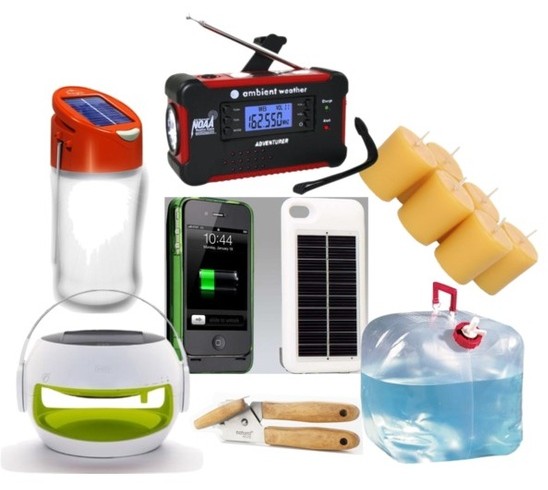

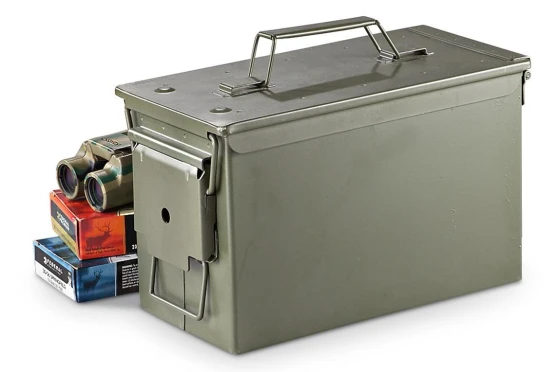

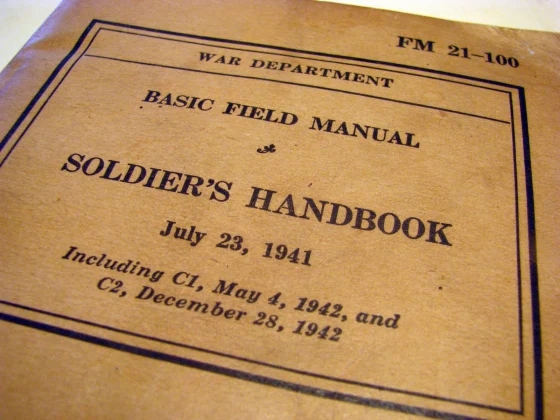
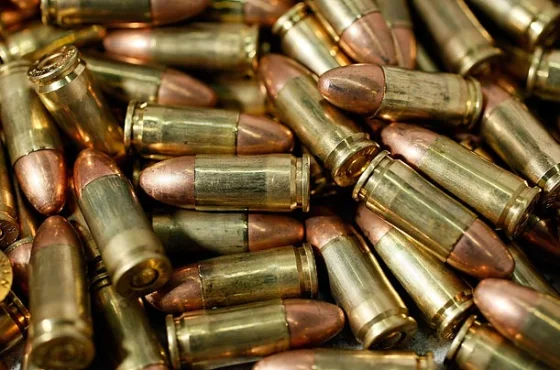

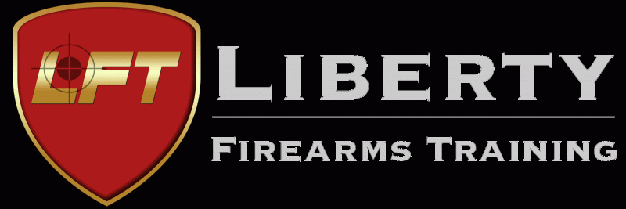

Thank you very much for this. It’s very helpful for me as a new AK owner. I do have a couple of questions, however…
In the ‘spoiler’ section, where you suggest zeroing the rifle at 25 yards using the 200 meter setting on the rear sight, the sentence after reads ‘your rifle will NOT be zeroed at 100m, 200m, 300m. Is this a typo. Should it read ‘Your rifle will NOW be zeroed…’?
Also, a common internet assertion I’ve read is that the battle sight setting is equal to the 200m setting in all applications. Based on your chart (battle sight vs. 100m vs. 200m) I now see this claim is nonsense as well.
Thanks again.. very helpful!
IJ
LikeLike
You are absolutely correct! Typo! It is now corrected. Thanks, and good luck. Let us know how it works.
Also, there is a ton of “battle site” crap on the internet. Do not trust me or anyone else on the internet. Experiment for yourself. Regardless of how your rifle is zeroed, set up a target at an easy to shoot distance (25 yards is fine). Shoot three carefully aimed shots with the rifle rested on a sandbag or rest with the sights set to 200. Next, move your sight setting to the “battle setting” and shoot three well aimed shots at the same spot as before. The group will move, thus proving that they are not the same.
There is also the YouTube assertion that you can zero the rifle at 25 meters with the “1” setting and the rifle will be properly zeroed. It is interesting to note that the YouTube hosts who make these videos always end up with 100 meter verification shots that don’t hit where they wanted, and they always have a creative excuse for why it didn’t work. They never approve any recommendations that I make in the video’s comment section, but they will be quick to incorrectly answer anyone’s questions and give out more bad advise.
Be careful with advise that you receive on the internet, including mine. As I stated above, go out and verify it yourself.
LikeLiked by 2 people
Hell Yeah!!!
LikeLike
HELL YEAH. And thanks for all the great info!
LikeLike
thanks alot for great info its very useful for us to understand riffel once again thank you so much
LikeLike
Hell yeah. And Biden is too.
LikeLike
I found this site fascinating and an excellent source of information that I haven’t seen anywhere else. Can you please tell me your source for determining that the BZO setting on the AK is at 247M rather than 300M? I am utterly astounded at how much misinformation is being published online regarding zeroing the AK, especially by experts. It’s refreshing to see someone publishing factual information and backing it up with evidence. Please, keep up the great work! I’ll be sharing this site and visiting frequently.
LikeLiked by 1 person
Hello, Sopater:
How did I determine this information? I have a lot of free time and have researched ballistic tables and then verified the data on the range. Also, I have tried many of the ways that are explained on the internet and most don’t work. Don’t trust any of us internet commandos. Do, however, go out to the range and verify my findings. Also, try to copy some of the other internet techniques. You will find that your results will differ from what has been advertised. Many YouTube videos are highly flawed, and if you read their comment section you will find many confused followers.
Your first question: In your experience, how accurate are the rear sight leaf settings on an AK? If I zero an AK at 25/200 Meters, how likely am I to be on-target at 100M or 300M if I move the slider on the sight?
To answer the first part of your question: The rear sights are dead on if you zero them correctly… better than I can shoot. To answer the second part of your question, if properly zeroed, you will be dead on at 100 meters and 300 meters. 75 million AK-47 rifles can’t be wrong! Also, there isn’t a 25 meter / 200 meter zero. Be very careful of this. With a properly zeroed rifle and the rear sight set to the 200 meter setting, the bullet will first pass through point-of-aim at 25 YARDS (not meters… and yes, it makes a difference!). Therefore, you can zero your rifle at 25 yards with the “2” setting and then verify that it is dead on at 100 meters with the “1” setting. You can also do the same technique at 18 meters (19.6 yards) with the “battle setting”.
Your second question: Can you please tell me your source for determining that the BZO setting on the AK is at 247M rather than 300M?
Why should you believe that the “battle setting” is not the same as the 300 meter setting? Don’t believe anything that you read on the internet. Try it for yourself. Set up your target at an easy to shoot distance (25 yards or meters will work…doesn’t matter). I used a 1″ dot on the target as an aiming point. Set your rear sight to the “battle setting” and shoot 3-5 carefully aimed shots from a bench rested position. Next, move your rear sight to the “3” position and again shoot 3-5 carefully aimed shots at the same 1″ dot. There will be two different shot groups on the target. The “battle setting” group will impact the 1″ circle, and the “3” group will impact slightly above the dot. This is the first way to prove that the battle setting and the 300 meter setting are not the same. Don’t trust me. Try it for yourself.
Why should you believe that the “battle setting” is a 18/247 meter zero? Don’t believe anything that you read on the internet. Try it for yourself. Once you have the rifle properly zeroed (shooting point-of-aim / point-of-impact at 100 meters with the “1” setting), move the sight back to the “battle setting”. Now set up your target with a 1″ dot at 18 meters (19.6 yards) and shoot 3-5 carefully aimed shots from a bench rested position. Your bullets will impact your point-of-aim. These results establish that the “battle setting’s” first zero is 18 meters.
How do we know that the second zero is 247 meters? With the “battle setting”, shoot 5 carefully aimed shots from a bench rested position at a target 100 meters away. According to the app “Ballistic”, assuming Wolf 121.9 grain FMJ with a muzzle velocity of 2444 FPS, and a 2″ sight height above bore, a rifle zeroed at 18 meters should impact 5.9″ high at 100 yards, or 6.3″ high at 100 meters (109 yards). I shot and verified this data at the range. But wait? What about 247 meters vs. 300 meters? On a dry, dusty day I shot at a steel target that was laser range verified to be 300 yards downrange. With the rifle set to “3” my carefully aimed shots impacted high, and with the “battle setting” they impacted low. I shot this to verify the data and it was spot on.
On the website I included ballistic graphs showing the difference between the “battle setting” and the “3” setting. They are definitely different. Don’t trust me. Try it for yourself.
As stated on this blog post, use these cheats when shooting your rifle at different distances:
Use the “battle setting” for general / defensive shooting out to 300 meters and get hits within +/- 7″ from your point-of-aim. This is your best “set it and forget it” setting.
Use the “1” setting for shooting at 50 yard and 100 yard rifle ranges.
Use the “2” setting for shooting at targets known to be in the 200 yard / meter range. It works perfect for 25 yard indoor ranges. Use it as your “set-it-and-forget-it” setting if all of your shooting will be within 200 meters (urban or jungle environment).
Reserve the use of the “3” setting for when you are shooting at a target know to be at a range of 300 meters.
LikeLiked by 2 people
In your experience, how accurate are the rear sight leaf settings on an AK? If I zero an AK at 25/200 Meters, how likely am I to be on-target at 100M or 300M if I move the slider on the sight?
LikeLike
There isn’t such a thing as a 25/200 meter zero. There is, however, a 25 yard / 200 meter zero. If you zero your rifle at 25 yards with the “2” setting, the rifle will be dead on at 100 meters with the “1” setting, 200 meters with the “2” setting, etc.
LikeLiked by 2 people
Fantastic article, just what I was looking for.
Do you have any specific AK74 5.54×39 zeroing instructions?
Thanks,
Dutch
LikeLike
Just the front sight, or both?
LikeLike
Just the front sight is fine. Center of the bore to the top of the front sight post.
LikeLike
I have not published anything yet. It has been on my to-do list.
Here is some information and some numbers that I have generated, assuming Wolf, 59 grain FMJ fired from a rifle with sights 2.0″ above center of bore, and a muzzle velocity of 2900 FPS. Please keep in mind that I have not shot any of this to prove or disprove it.
100 meter Zero:
This caliber is VERY flat shooting. For a 100 meter point-of-aim = point-of-impact with the “1” setting the near zero is going to be 72 meters (78.7 yards). This isn’t going to be a very good setting to initially zero the rifle because the near zero is so far away.
Expected 100 Meter Zero Trajectory:
After 72 meters the bullet rises only a few 100ths of an inch until falling back through point-of-aim at 100 meters (109) yards.
125 meters (137 yards): – .40″
150 meters (164 yards): – 1.24″
175 meters (191 yards): – 2.48″
200 meters (218 yards): – 4.17″
Summary: The caliber shoots too flat to zero at 100 meters. Use another sight setting / near zero combination. After your rifle is zeroed, when shooting with the “1” setting you can expect your round to touch point-of-aim at 72 meters and ride along it until reaching roughly 105 meters. It will pass down through 2 inches below point-of-aim at 167 meters. Expect hits within +/- the height of the front sight (2″) from the muzzle out to 167 meters (183 yards).
200 Meter Zero:
This will be a little easier to zero the with the “2” setting as the near zero will be 34 meters (37.2 yards). You can set up a target at 34 meters, set your sights to “2”, and zero the rifle. You can then verify zero buy moving the sight to the “1” setting and then shoot a target 100 meters (109 yards) away.
With a properly zeroed rifle and the sights set to “2” you can expect the round to first pass through the point-of-aim at 34 meters (37.2 yards).
Expected 200 Meter Zero Trajectory:
50 meters (54.7 yards): + .7″
100 meters (109 yards): + 2.0″
150 meters (164 yards): + 1.9″
175 meters (191 yards): + 1.2″
200 meters (218 yards): POA = POI
225 meters (246 yards): – 1.7″
250 meters (273 yards): – 3.9″
Summary: The 200 meter has a much better near zero to initially set up the rifle. Also a great “battle setting”. Once the rifle is zeroed, the “2” setting will provide a trajectory that passes within +/- 2.2″ of point-of-aim from the muzzle out to a little past 230 meters (252 yards).
300 Meter Zero:
The 300 meter zero looks like a great way to zero the rifle as the near zero is an easy to shoot 21 meters (23 yards). You can set up a target at 21 meters, set your sights to “3”, and zero the rifle. You can then verify zero buy moving the sight to the “1” setting and shoot a target 100 meters (109 yards) away.
Expected 300 meter zero trajectory:
50 meters (54.7 yards): + 2.4″
100 meters (109 yards): + 5.4″
150 meters (164 yards): + 7.0″
175 meters (191 yards): + 7.0″
200 meters (218 yards): + 6.7″
225 meters (246 yards): + 5.8″
250 meters (273 yards): + 4.5″
275 meters (301 yards): + 2.6″
300 meters (328 yards): POA = POI
325 meters (355 yards): – 3.12″
350 meters (382 yards): – 6.9″
This zero has a great near zero to use for setting up the rifle. The trajectory has too high of an arc to be used effectively as a set-it-and-forget-it battle setting.
Battle Setting:
It is my understanding that the battle setting on the AK-74 represents a 400 meter zero. This may or may not be true. I only say this because many people on the internet erroneously state that the battle setting on the AK-47 is a 300 meter setting. Though experimentation I proved that it is actually a 18 meter / 247 meter zero. As with the claims that the AK-47 battle setting is the same as the 300 meter setting, I ask why would you have a battle setting that is the same as one of the other settings? It isn’t the case with the AK-47, so I question if it is actually a 400 meter zero with the AK-74.
Once you properly zeroed your AK-74 so that it hits point-of-aim = point-of-impact at 100 meters with the “1” setting, 200 meters with the “2” setting, etc, you can set up a target at the 400 meter setting’s near zero of 15 meters, place your rear sight on the battle setting, and fire four or five carefully aimed shots from a rested shooting position and see if your rounds impact exactly at your point-of-aim. Also, for comparison move your sight to the “4” setting and fire four or five more carefully aimed shots. If the bullets strike in the exact same spot, then this will prove that they are the same trajectory. If they strike in two different groups then this will prove that they are different.
If the battle setting shots do not impact exactly where you aim, move your target a little closer or farther away and shoot a few more shots. Continue until you hit exactly where you aim. This will be your near zero for the battle sight. If you could shoot at 100 meters with the battle setting and measure the distance of the shot group from the point-of-aim, then we can make some calculations and establish the true trajectory of the battle setting and become internet sensations for proving everyone wrong. Once you set up your rifle it would be great if you could take the time to prove or disprove the 15/400 meter trajectory for the battle setting and report back to us. For ease of distance conversion, 15 meters = 16.4 yards. Measure precisely. It matters. Thanks!
If the battle setting is the same as the “4” setting the you can expect a roller coaster trajectory from both:
50 meters (54.7 yards): + 4.4″
100 meters (109 yards): + 9.6″
150 meters (164 yards): + 13.25″
175 meters (191 yards): + 14.4″
200 meters (218 yards): + 15.1″
225 meters (246 yards): + 15.3″
250 meters (273 yards): + 15.0″
275 meters (301 yards): + 14.1″
300 meters (328 yards): + 12.6
325 meters (355 yards): + 10.6″
350 meters (382 yards): + 7.8″
375 meters (410 yards): + 4.2″
400 meters (437 yards): POA = POI
425 meters (465 yards): – 5.0″
450 meters (492 yards): – 11.2″
475 meters (519 yards): – 18.0″
500 meters (547 yards): – 26.0″
Good luck, and please let us know how this works out for you.
Chet @ Savannah Arsenal
LikeLike
Excellent information, well thought out and put together. But I just have a few questions. Which muzzle is the best to have on my AK and is it better if I put AR 15 handguards on it.
LikeLike
My personal feeling is that you will be better served by investing your money and time into training, practice, and ammunition, rather than firearm modifications. A muzzle device isn’t going to make you a better shooter until you get such an incredible amount of training and experience that you are better than the gun.
I don’t have any experience with AK muzzle devices, except for what came stock on my Arsenal 107-FR rifles. I guess they do a pretty good job of mitigating muzzle rise. I’m not sure that if I spent the time to change them out that it would make me a better shooter with the gun. That being said, they do nothing to stop muzzle flash. I have shot them a few times at dusk and early evening, and the flash is quite impressive. Muzzle devices is a subject that I will soon study as I would like to use those rifles for night piggy hunts. I stated that I don’t think that a muzzle device change will help me shoot, except that I can’t shoot very well if I’m temporarily blinded. The amount of flash that they allow is not acceptable. If you are going to ever train or hunt in low light, a muzzle device change might be warranted. Please let us know what you decide on and how you like it. I’ll report my findings and experience very soon.
As far as the subject of handguards, you can’t install AR-15 handguards on an AK. They are two completely different animals. There isn’t a way to make it work.
LikeLike
Maybe a stupid question but I just want to verify I’m aiming down the sights correctly: Do I put the very top tip of the front sight to the bottom box of the rear sight to where I can barely see the front sight post or do I line up the front sight post to where it is flush with the rear box sight?
Thanks!
LikeLike
Not a stupid question.
Line up the front sight so that it fits into the notch in the rear sight and is flush across the top, as seen in the first photo below..
When you zero the rifle you will want the tip of the front sight post to laterally bisect the center of the target, as seen in the photo below.
LikeLiked by 1 person
For what it’s worth, the reason why “П” is said to be the same as “3” is because the official Russian AK manual that is used by the military explicitly says so. Here is the text verbatim:
“Прицельная планка имеет гривку с прорезью для прицеливания и вырезы для удержания хомутика в установленном положении посредством защелки с пружиной. На прицельной планке нанесена шкала с делениями от 1 до 10 и буквой «П»; цифры шкалы обозначают дальности стрельбы в сотнях метров; «П» — постоянная установка прицела, соответствующая прицелу 3.”
Translation:
“The rear sight leaf has a mane with a slot for aiming, and cutouts to fix the clamp in the specified position by means of a spring-loaded latch. On the sighting bar, there’s a scale with divisions from 1 to 10, and the letter “П”; digits of the scale designate firing distances in hundreds of meters; “П” – permanent sight position, corresponding to position “3”.
Now, it may well be that the manual is wrong, but I wonder if perhaps some AKs are just out of spec? How many of them have you checked this setting on? Perhaps it’s a particular country of origin or manufacturer that is at fault?
LikeLike
Today we shot at steel targets at 300 yards with an Arsenal 107FR and a Norinco MAK-90. Both had been zeroed the same way and both were shot with the same ammunition.
“3” Setting:
With the “3” setting (300 meters) I knew that the rounds would impact slightly high at 300 yards and verified this by observing that you had to aim low on the target (“belt line”) to get the bullets to splash into middle of the target.
“Battle Setting”:
With the battle setting we expected an approximate 270 yard zero and knew that we would have to aim high on the target to get the bullets to impact in the middle of the target. Both rifles aiming dead center of the target, or at the same low aiming point as the “3” setting resulted in the rounds impacting below the target. As predicted, at 300 yards with the battle setting both rifles were required to be aimed at the top of the target to get the rounds to impact in the middle.
I’ll have access to a Russian Saiga in a couple of weeks and will run the same test.
LikeLike
Please help! How many yards/meters do I zero my ras47 red dot primary arms micro dot? Please thanks!
LikeLike
Look at the trajectories for the different zero distances and see which one works best for you. If sight can be cowitnessed then simply zero it to that distance. If it can’t be cowitnessed (maybe sits a little high) then we can figure out a pretty close compromise if we know the height of the red dot (probably the center of the sight) above the center of the bore.
LikeLike
Thank you so much for helping! I’m using a Ras47 with a primary arms advanced micro red dot. with the century red army standard scope base and mount which was made from century for this ak47. Using wolf fmj 123 grain. The iron sites are zero in by using your website! 25 yards with rear setting at 2. Then 100 meters and rear setting back to 1. But I always use battle setting! Thank you for helping me, I hope to hear back from you soon!
LikeLike
The red dot sight can’t be co witness and the measurements, center of red dot sight and center of bore is roughly 2″1/4-2″1/2. I’m no expert but by using a tape measure that’s The measurements. Bullets are 123grain wolf fmj 2350 thanks!!
LikeLike
Hi, Justin.
My apologies for taking so long to respond.
Using 7.62x39mm Soviet 123 grain FMJ at 2350 FPS and a sight height of 2.5″ above bore I came up with a couple of decent trajectories. I used yards for both. I’m assuming that you are in the USA and think in terms of yards.
35 / 186 Yard Zero:
This looks like a GREAT zero for shooting within approximately 250 yards. This zero will provide a trajectory that never rises above or below the height of the front sight from the muzzle out to 220 yards. You will hit anywhere within a 5″ circle out to that point. The Primary Arms Micro RDS has a 2 MOA dot. As you can see from the numbers below, you rounds will impact within (or very close to) the red dot from about 25 yards out to almost 250 yards.
30 / 212 Yard Zero:
This zero doesn’t provide a trajectory within the red dot like the 35/186 yard zero, but it is still very usable.
17/326 Yard Zero:
Rob Ski of The AK Operators Union recommends zeroing your red dot sight so that your rounds impact 9″ high at 100 yards. This translates to a 17 / 326 yard zero. Initially I thought that this would be a terrible zero to use, however if you follow the “Soviet method” that Rob and so many other YouTubers refer to and aim at the waistline of a humanoid target then your rounds will hit somewhere in the upper torso out to 326 yards. I ‘m not a big fan of impact of over a foot above point-of-aim at 200 yards.
Assuming the same ammunition and sight height above of 2.5″:
Conclusion:
I’m mounting a 2 MOA Vortex Sparc RDS to a Midwest Industries Gen 1 Universal Handguard. I’m going to go with the 35/186 zero to take advantage of bullet impact within the red dot.
LikeLike
Wow thank you so much! Very helpful info!
LikeLike
Glad to help! I was curious about the same thing. Please let us know how it works for you.
LikeLike
HELL YEAH!!!!
LikeLike
Hell Yeah, Hilary is a POS
LikeLiked by 1 person
Hell Yeah, George is too kind.
LikeLike
Very informative article, very helpful indeed–and Hillary Clinton is a piece of shit.
LikeLike
How accurate do you find the graduated ak sight scale? For instance if zeroed at 100 meters on 1 do you find that when you slide it to 2 is is pretty much set at 200 meters?
LikeLike
Yes, with a Russian, Chinese, and Bulgarian rifle it has been zeroed at each respective distance.
LikeLike
If you appropriately zero it then you should be good to go at each setting and its respective distance.
LikeLike
do you feel it is better to zero on 2 @ 25 yards or 1 @ 100 yards? rifele not accurate enough to tell the difference?
LikeLike
Zeroing with “2” @ 25 yards is the best way to initially zero it. You can then verity it at 100 meters with the “1”.
After you zero it, move the slider back to the battle setting and see if is a 18 meter/19.5 yard zero. The trajectory of that setting is discussed in the article.
LikeLike
Hell Yeah!! Great article, helped clear up some issues I was having trying to get on paper and then zeroed. Thanks!!
LikeLike
Rob Ski is now on board with my method!
LikeLike
Greetings from Finland!
And thank you for very comprehensive article and instructions considering 7.62x39mm AK/AKM zeroing. Propably the best I’ve red so far.
Here in Finland nearly 60 years of experience using AK platform and all of our conscripts and reservists are trained to use either Finnish RK62 or 95 variants or various eastern-block AKs.
With Finnish RKs, the basic battle-zero is 150 meters (164 yds) and I have used this same zeroing distance also for various eastern-block AKs, because mostly all the military shooting ranges are 150m distance. Trajectory is quite close to your 186 yards zero. Quite flat shooting up to 200 meters. Bullet flies up to 4-5cm high from LOS (2″) up to 150m and drops 10-11cm (4″) down up to 200 meters.
My opinnion is that combat accuracy of standard 7.62x39mm AK/AKM is maximum 200 meters. After that, inaccuracies start to dominate. That’s why I like to use the 150m zero as “set-and-forget” zero and use no other settings on the rear sight. Shooting point targets after 300m is dreaming and distances on the rear sight farther than 300m is ment for area targets I think.
My standard procedure for zeroing the AK or AKM is to set the rear sight to rearmost battle setting, zero the rifle to 150 meters and fix the rear sight slider to its place by wrapping thin wire cord to first visible notch on the rear sight leaf just in front of the slider and locking the slide to it’s place. Set and forget and shoot everything up to 200m with maximum of 2″ elevation or 4″ drop up to 200 meters.
LikeLike
Hi, and thanks for your input and for sharing your experience.
SA
LikeLike
Robs Russian 100 meter zero target measures at 25cm wide 35cm high.
What would the target measurements be for 100 yard zero?
At what height on the 100 yard target should POI be?
LikeLike
Hi Luke, and thanks for your question.
I’m not sure exactly what size you would scale the 100 meter target down to at 100 yards, but you could figure out what percentage 100 yards is of 109 yards (100 meters) and then reduce the dimensions of the target by the same amount. You would also have to know how far the round should impact above point of aim at 100 yards rather than 100 meters (spoiler… with the 1 setting the point of aim and point of impact is mathematically insignificant between 100 meters and 100 yards)… if you really wanted to go to that much trouble.
I’ve tried the “Soviet way” that Rob demonstrates in his video. I found that at 100 meters it is very hard to line up the top of the black front sight post with the bottom of the black target and not accidentally overlap black on black. It is much easier to zero at 25 yards with the 2 setting and then verify zero at 100 meters with the 1 setting. If your range is only 100 yards it truly won’t matter because with the 1 setting the point of impact will be practically the same (difference measured in a very small fraction of an inch). Honestly, with an AK sights and factory ammunition you aren’t going to see any difference between 100 yards and 100 meters.
As discussed in my article, the near zero of a 100 meters is 50 yards. After you zero at 25 yards with the 2 setting you could move your target to 50 yards and shoot with the 1 setting, and then to 100 yards with the 1 setting.
If you are one of those guys that views Rob’s methods as though they are the best way, keep in mind that after I left comments regarding the 25/2 method on his YouTube video, he just made a video demonstrating the 25 yards/2 method, so since he agrees with it, that should help legitimize the procedure.
IMHO… forget the Soviet method and don’t waste your valuable time trying to scale down the target. Just do it the easy way… and the new Rob way.
I hope that helps. Good luck and keep us updated with your progress.
LikeLike
Hi
I’m glad I’ve found this gem. I bought Saiga MK103 yesterday and tried to find easy explanation of zeroing procedure for this rifle. Your article probably saved a lot of my time and I want to say thank you. Tomorrow I’ll go to the 25meters range to make first adjustment using the “2” setting according to your advice (I’ll try to set the target at 22,86 meters, basicaly 23 meters – 25 yards).
Thaks a lot!
LikeLike
I’m glad that it helped!
Keep us updated with your progress!
LikeLike
Right after I sent you my question my rifle had to be repaired. I just got it back and I really want to give this a go. I’m stumped on verifying at 100 yards. In the American zero video poa/poi looks off at 100 yards. How much higher should poi be at 100 yards on setting 1?
Thanks again
LikeLike
Good question.
With 7.62x39mm Soviet and an AK47 you will not be able to tell a difference at 100 yards or 100 meters. Just initially zero at 25 yards with the “2” setting and then verify at 100 yards with the “1”. You aren’t a good enough shot, and the rifle and ammunition are precise enough for you to be able to tell a difference, which mathematically is a small fraction of an inch. Also, with the “1” setting you should be hitting point-of-aim / point-of-impact at 50 yards.
I hope that this helps! Keep us updated with your results!
LikeLike
“Shooting point targets after 300m is dreaming and distances on the rear sight farther than 300m is meant for area targets I think.”
This video proves that theory incorrect: https://1776tv.com/video/2018-ak-files-national-shoot-recap-big-piney-sportsman-club
Want to see what AK’s can do in a dynamic setting? Come out to one of these events!
A big THANK YOU to TSAP for all of this great info!!!
https://1776tv.com/videoEmbed/2018-ak-files-national-shoot-recap-big-piney-sportsman-club
LikeLike
I totally agree. I can hit manhole cover size steel at 400 yards fairly often, and occasionally 500 yards with iron sights (if someone spots for me… my eyes aren’t what they use to be). I’m am even better with a 2 MOA red dot.
LikeLike
About the 200m effective range with AK. I have to say I disagree with you gentlemen, I say it’s 200 meters, maximum.
It’s a whole different story shooting steel at the range. In combat, you are shooting targets which are moving… And taking cover trying to avoid not to get hit… And they are camouflaging themselves trying to make themselves as difficult as possible to spot… And you don’t know the distance. You need as accurate rifle as possible to strech the effective range.
I’m not saying it would be easier with other (iron sighted) rifles, but when you are shooting small, moving and camouflaged targets which are shooting back at you, you need as accurate rifle as possible. With flat shooting (distance estimation less critical) and fast traveling bullet (taking lead less critical). More less you have cumulative factors which make your fire inaccurate, more happier you will be.
Debatable 200 meters maximum range, I don’t see that as a problem. Practical shooting distances are far shorter in urban or forest area. From few meters up to less than 100m most of the time. Not a problem for trained and dedicated AK operator.
LikeLike
Thanks for your input.
SA
LikeLike
I have a rear sight just like the one in your photo at the top of this page. But I’m a little confused about the settings. In your photo is the sight set at the 100m or is it set on the Cyrillic battle site setting? Thanks.
LikeLike
That is the 100 meter setting.
LikeLike
Hell Yeah!!!
LikeLike
Thanks for the zero tips! That 35 yard rds zero looks great to use, I plan on using it on my ak. My local ranges only go up to 25 yards though, would you happen to know how low it should be at 25 yards so I can get the 35 yard zero? Thanks!
LikeLike
I’m assuming that you are talking about zeroing a red dot at 35 yards…
On a ballistic calculator, assuming Wolf 7.62x39mm Soviet with a muzzle velocity of 2350 FPS out of a 16″ barrel zeroed at 35 yards, the bullet should impact 1/2″ low at 25 yards.
Good luck and keep us posted of your progress and results.
LikeLike
Hi
thank you, your suggestions are very clear but, let me to comment the ballistic charts (200m, 300m…). There is unclear the “x” axis – yards. At first, the ballistic curve begins at 5 yards…strange. At second, see e.g. “battle setting” chart: you write that zero is at 19.6 yards but on the chart you can read cca 25 yards.
regards
Peter
LikeLike
I think that you are over analyzing the chart. For example, on the “battle setting” graph you are interpreting the middle of the 20 yard column as 25 yards. It is simply showing what the rise or fall of the projectile should be at that distance. What you interpret as 5 yards is simply the middle of the 10 yard column. Maybe I could have made the graphs a little more complex, but the neither the gun nor the round are precise enough to warrant making the graphs anymore complicated than they need to be, and I wanted them to be easily interpreted so as to quickly get the point across to the reader. I hope that helps.
LikeLike
Hi
Thanks a lot, it gives a sense now. I presumed that the data in the chart(s) are accurate.
regards
Peter
LikeLike
Great info here! I have an sks “cowboys companion” with a 16 1/2” barrel. It also came with the type 89 scope and mount. The scope is around 2 1/2” from scope c/l to bore c/l. My indoor range is believe it or not 23 yards! Should the procedure be the same as for the red dots? Just wondering if you could give me a couple ideas where to sight at the short distance I’m going to be using. I also have an original Russian Pu scope and I’m thinking of using that instead of the cheap Chinese type 89 setup. It is a better scope overall.I
LikeLike
Hi Glenn,
I don’t know anything about those optics. Please update and keep us update of whatever you find out with your research.
Thanks!
LikeLike
I appreciate the work you put into this subject. From my experience, American shooters confuse themselves on what ‘combat accuracy’ or rifle consistency is. According to the U.S. Army, scoring a hit from the various distances on a 300m pop up combat range (pop up targets from various ranges from 25m out to 300m) is your bullet striking your silhouette or 3D ‘Ivan’ target anywhere within that space while the target is presented. It doesn’t matter what your groupings measure on that target when you’re on the qualifying range. For regular troops, the only time you’re concerned with a ‘group’ is when you are on the zero range, i.e. shooting 3-shot groups successfully within the 2.5cm circle on the 25m target. I read the commenter from Finland about sight picture and I would tend to prefer a sight picture similar to what Rob Ski describes as the ‘belt line’ method. The center mass method is probably ok for most shooters who have good to great eyesight but for us old dogs who have vision challenges, using a center mass hold past 100m will result in your front sight post occluding at least half your target or occluding your target entirely and that’s a big deal if you’re correctly focusing your vision on your front sight post. I’d rather have some visual on my target as I know that in combat shooting, I’m not striving for a sub 1MOA. I just need to hit that target. Can the AK and M16A2 reach out reliably to 300m? I think so… If you have good vision, lol. Do you need to zero out to 300m? Maybe, maybe not. Personally I’d rather have the ability to stretch out with an acceptable holdover rather than zeroing for very short range (for a rifle) then possibly struggling with the sight adjustment or an obscene holdover.
LikeLike
Hi Eddie, thanks for your input!
LikeLike
Hi there, thank you very much for this article, I found it extremely helpful. I am a bit confused on the process for obtaining a 25/200 “2” setting zero. I ideally would like to use the “2” or “Battle” configuration regularly.
You say set the rear site to “2” and tune at 25 yards.
Then tune at 100 yards to confirm zero.
My questions:
Once I complete the 25 yard test in “2” mode, do I switch to “1” mode when I do the 100 yard verification.
After I use the 25/200 method to zero my rifle, can I just switch the rear sight position to battle, 1, 2, or 3 modes as needed/depending on distance? Or do I have to re-zero?
thank you once again!
LikeLike
“You can set your rear sight to “2” and zero your rifle at 25 yards (not meters). You can then move the rear sight to “1” and verify the zero at 100 meters (109 yards).”
Once you have zeroed at 24-25 yards with the “2” setting then you can verify that it is properly zeroed and calibrated by shooting 100 meters with the “1”. It should then be set up to shoot point-of-aim / point-of-impact at 200 meters with the “2”, 300 meters with the “3”, 400 meters with the “4”, etc.
Let us know how it works!
LikeLike
I have been going over your absolutely fantastic zeroing techniques but there’s something I just cannot figure out. In reference to the battle setting where roughly out to 300 yards the point of impact will be plus or +/- 7 inches.. I get that … But if you are aiming at someone’s belt buckle (using Russian technique) at 300 yards won’t you be hitting around 7 inches below the belt buckle and not even close to torso?
Thank you again for a fantastic write up!
LikeLike
Technically what you are saying is correct and I probably should reword that. At the risk of sounding like a smart-ass (and I promise that is not my intention), can you even see a belt buckle at 300 yards? Just pray that they stand still for you to aim “middle of meat” and take the shot. Even if it is below their belt line, any hit with an AK at 300 yards is a good hit. If they stand up straight and tall, and you hit a few inches below your point-of-aim, I pretty sure that they will not be happy. I’ll look into rewording that. Thanks so much for your input and I’m sorry that it took me so long to reply to your comment.
LikeLike
Could you please give us some info on zeroing a short barreled AK? 12” barrel preferably. Irons and red dot. I have a exps3 on my 104 clone with a 12” barrel. Optic sits about 3.5” over bore. I’m not sure what distance I should zero my irons and optic. I plan to engage 300m MAX and in(more like 15m-200m). I would like to know best zero for both optic and irons for those distances. (7.62x39mm)
LikeLike
You will need to provide muzzle velocity and weight of the round that you are using. The muzzle velocity on the ammo box is not what you will be getting from a 12″ barrel. You will need to either chronograph with your gun and preferred ammo, or Google and find out if anyone else has already done it and can provide numbers.
LikeLike
Hi Savannah Arsenal peeps, I created a 100 yard (not meters) target as a pdf. It should be printed on tabloid paper (11 x 17 inches) I think I got the measurements right, the larger target is 9″ x 13″ with a smaller 2×2 target 9″ from the bottom of the larger target. I will print a few and see if the measurements need adjusted. If successful I will send you the pdf so you can post it here.
LikeLike
Thanks! I’d be glad to post it!
LikeLike
Your directions worked wonders for my Saiga 7.62.
Do you have – by chance – any remarks about zeroing a AKS74U (Krinkov) ?
LikeLike
I do not have any information on the Krinkov, other than I can’t see using it effectively past 100 yards or meters. I would just zero it at one of those close distances and let it roll.
LikeLike
Thank you so much for sharing your info on zeroing your AK. If you follow your procedures you will get hits out to 300yrds with iron sights all day long. Myth is busted that AK is not accurate. Using cheap Russian ammo btw.
LikeLike
Exscuse my stupid question/comment…
You said that there is nothing like a “25/200m zero” because it’s a “25y/200m zero”.
Okay.
But 25 yard are 22.86 meters.
Can it be said that there is a “22.86/200m zero”? Or for ease of use a “23/200m zero”?
Thank you for your help.
Best regards,
LikeLike
Sounds good. What ever conversion works for you. Let us know how your zeroing works out. Thank you.
LikeLike
I would like to draw an accurate paper zeroing target for 25y zeroing because I have to zero a lot of AK’s in the next month and I have a very limited time for that. I have 2 questions regarding this.
1. With commercial sight adjustmen tool the one turn is 20 cm at 100 m on both windage and elevation or only on elevation? – I just ask because the commercially available 25 m and 14 m zeroing targets have different measurements for windage and elevation.
2. If one turn is 20 cm at 100 m then proportionally 1 turn is 4,57 cm at 22,86 m. Is this true or am I get smthg wrong?
LikeLike
“Hell Yeah!” WWG1WGA
LikeLike
Could you possible do something like this for AK pistols with a 10.5″ barrel?
LikeLike
Only if you chrono the ammo to see what velocity that it is getting.
LikeLike
HELL YA! She’s a real Dirtbag, Hater of America.
LikeLike
Hell Yeah!!!!!!!!!!!!!!!!!
LikeLike
Thanks for this info. Just what I’ve been looking for. Do you happen to know where to get targets designed for the 25 yard 100 yard zero? Or how to make them myself. Thanks
LikeLike